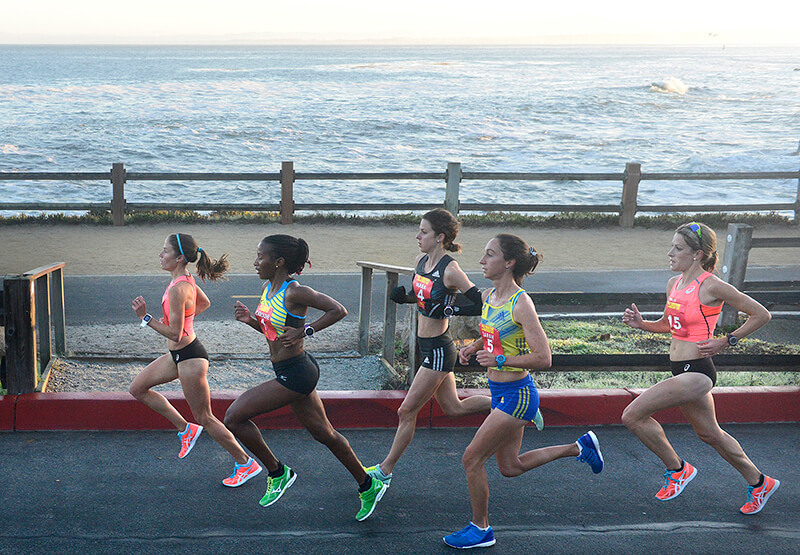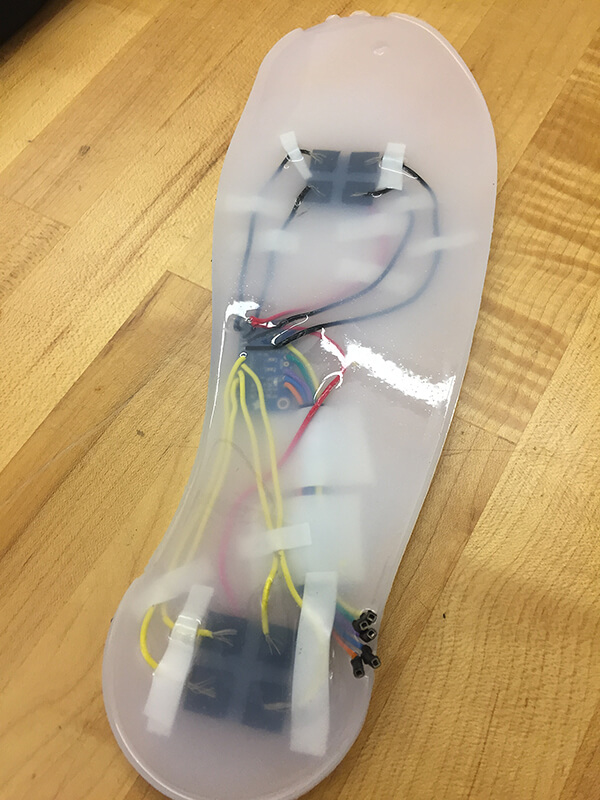October 25, 2018
Small new shoe sensor may be a driving ‘force’ to help prevent injuries, improve athletic performance

New shoe sensor developed by Purdue University researchers may help prevent injuries and improve performance for runners and other athletes. (AP Photo)
Sensor can show athletes, trainers where foot impacts are strongest to detect and correct inefficiencies in movement and reduce injuries, also can help diabetics avoid foot blisters.
WEST LAFAYETTE, Ind. – Justin Markel and Quinton Lasko know what it’s like to be competitive athletes and the cost of being injured on the field. Now, the Purdue University alumni have turned their passions for sports and engineering into a new technology they hope will be an athlete’s solution to worrying about preventable non-contact injuries.
The issue affects many individuals and families in the United States – with more than 8.6 million sports- and recreation-related injuries reported each year, according to the Centers for Disease Control and Prevention.
Markel, Lasko and other researchers at Purdue developed an insole sensor to provide a practical method of measuring the full range of forces on the foot. Their capacitive force sensor uses parallel plates to measure 3D forces on the foot and then transmit the data to a central hub computer or tablet.
 An insole shoe sensor developed at Purdue helps to measure the full range of forces on the foot. (Image provided)
Download image
An insole shoe sensor developed at Purdue helps to measure the full range of forces on the foot. (Image provided)
Download image
“Our team is really passionate about pushing athletic performance to the next level, and giving athletes the opportunity to gain a competitive edge,” Markel said. “Every athlete is unique, and providing complete 3D force data is essential to understanding peak-performance and ultimately reducing injury potential.”
The Purdue mobile insole sensor is small, flexible and adjustable to work for different body types and different athletic applications. The researchers also believe the technology may be helpful for shoe companies to use the data in designing footwear and for diabetic patients to avoid blisters on their feet.
“Existing mobile sensors that our technology competes with use pressure mapping to derive force measurements, and this really doesn’t provide the whole picture,” Lasko said. “We believe our technology could lead to individualized training that allows athletes to detect and correct inefficiencies in their movement and reduce their chances of being injured.”
The other student researchers involved with the project include Dane Rudy, Jennifer Regard and Christopher Spiers. They won the 2017 Malott Innovation Award from the School of Mechanical Engineering for their technology.
Their work aligns with Purdue's Giant Leaps celebration, celebrating the university’s global advancements in health as part of Purdue’s 150th anniversary. This is one of the four themes of the yearlong celebration’s Ideas Festival, designed to showcase Purdue as an intellectual center solving real-world issues.
The technology is patented through the Purdue Office of Technology Commercialization, and the innovation is available for licensing.
About Purdue Office of Technology Commercialization
The Purdue Office of Technology Commercialization operates one of the most comprehensive technology transfer programs among leading research universities in the U.S. Services provided by this office support the economic development initiatives of Purdue University and benefit the university's academic activities. The office is managed by the Purdue Research Foundation, which received the 2016 Innovation and Economic Prosperity Universities Award for Innovation from the Association of Public and Land-grant Universities. For more information about funding and investment opportunities in startups based on a Purdue innovation, contact the Purdue Foundry at foundry@prf.org. For more information on licensing a Purdue innovation, contact the Office of Technology Commercialization at otcip@prf.org. The Purdue Research Foundation is a private, nonprofit foundation created to advance the mission of Purdue University.
Writer: Chris Adam, 765-588-3341, cladam@prf.org
Sources: Justin Markel, justinmarkel11@gmail.com
Quinton Lasko, qlasko@gmail.com

